
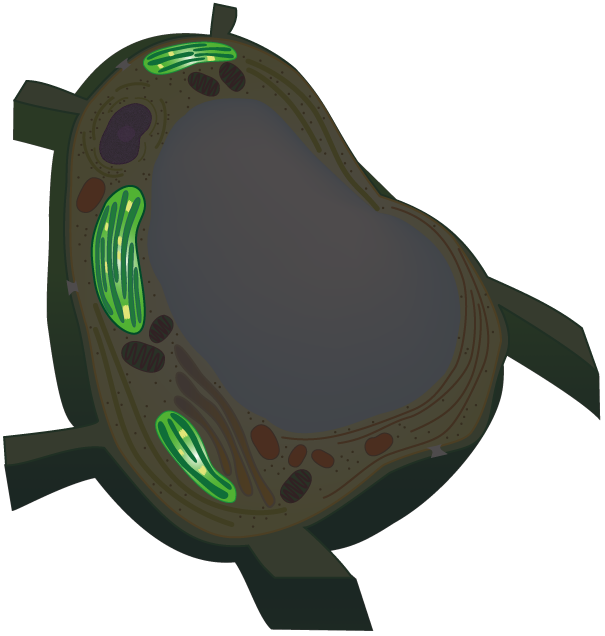
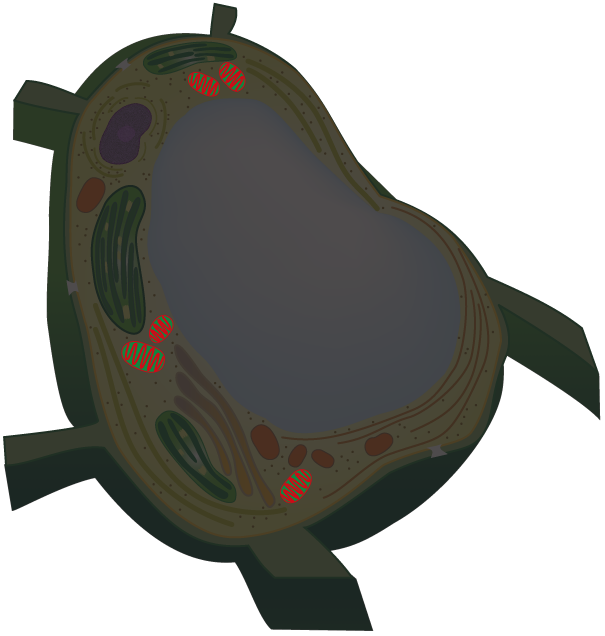
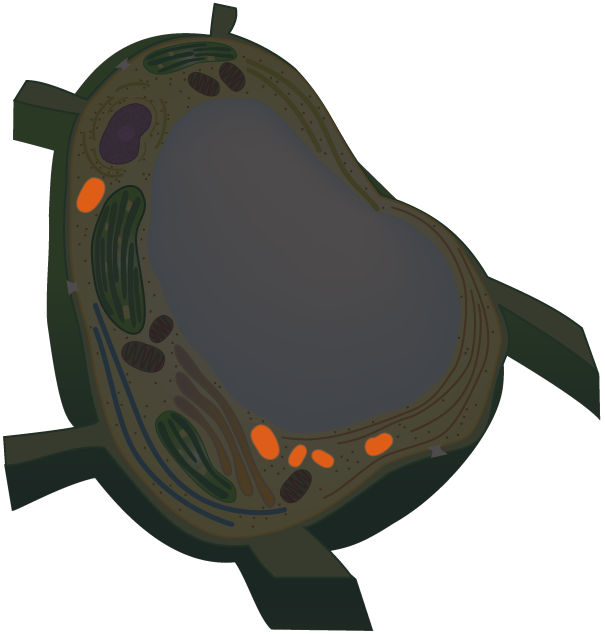
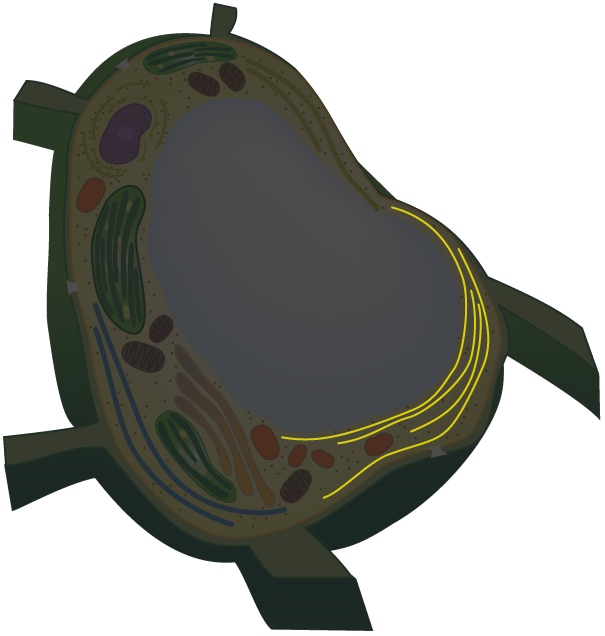
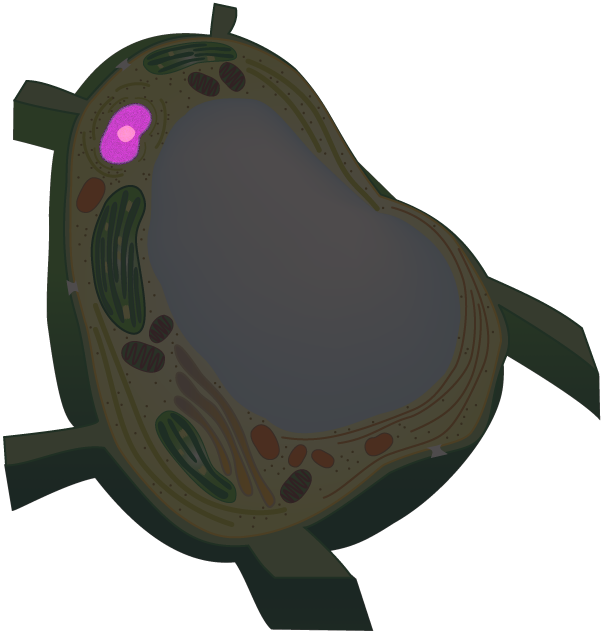
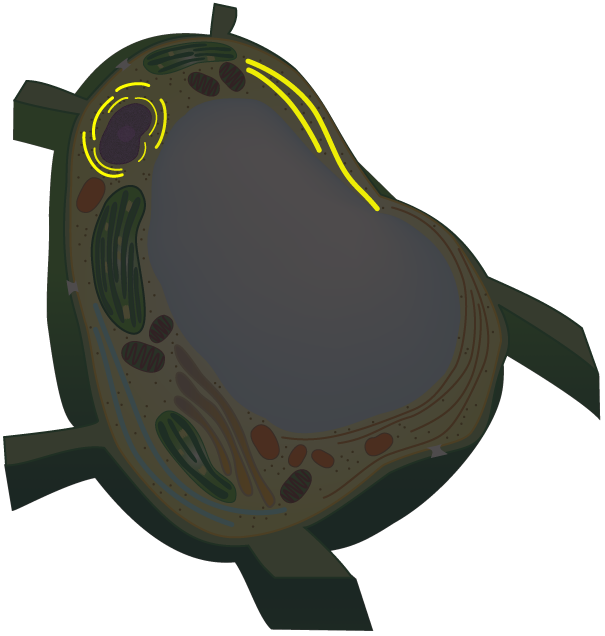
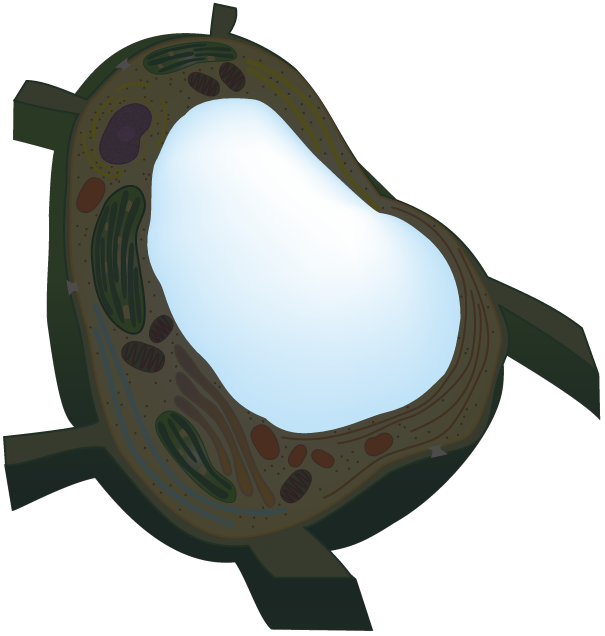
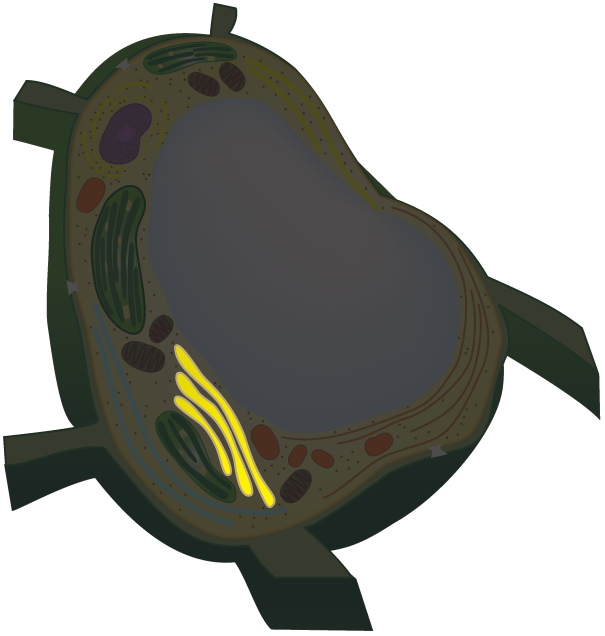
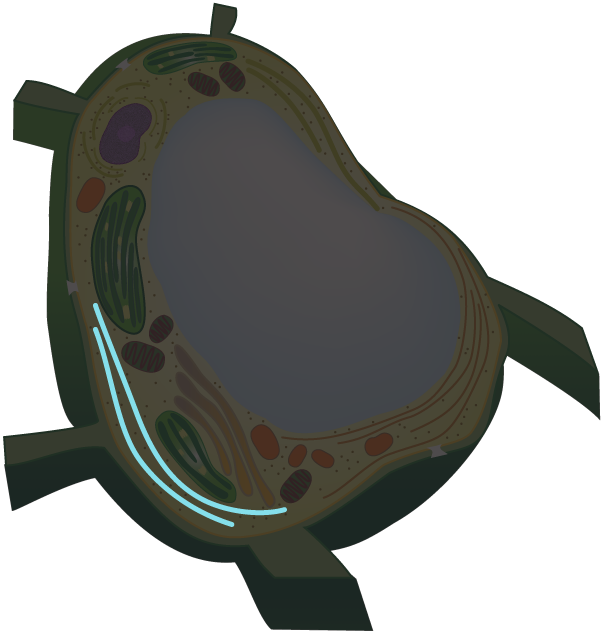

Peroxisome
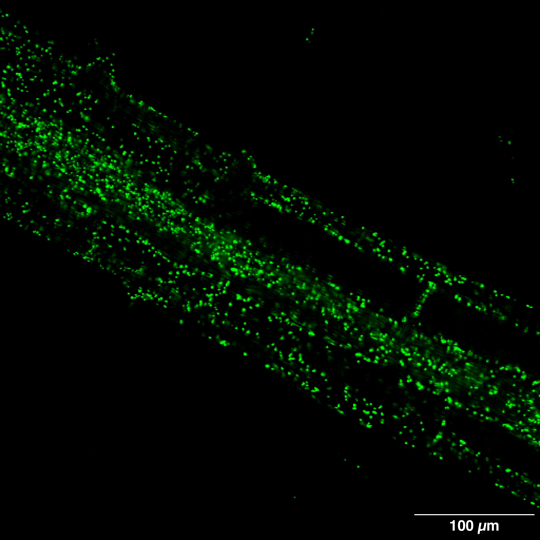
Peroxisomes are observed as spherical structures, whose diameter is about 1 µm. They participate in the metabolism of fatty acids, detoxification of reactive oxygen species and biosynthesis of plant hormones. This picture shows root cells of Arabidopsis expressing a fusion gene of GFP with a peroxisome targeting signal.
Nucleus
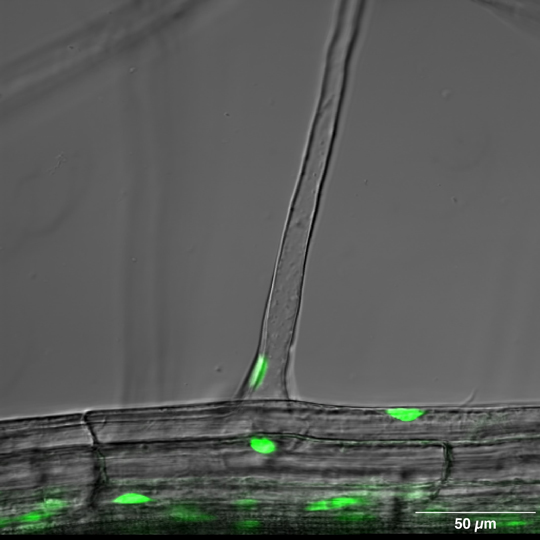
Nuclei contain genomic DNA, which is necessary for life. Each cell has one nucleus where duplication of DNA and transcription to mRNA occurs. This picture shows root cells of Arabidopsis expressing a fusion gene of GFP with the gene encoding a protein necessary for mRNA maturation. Green signals represent the nucleus, and cells are shown as differential interference contrast. The long structure, which protrudes from the root, is root hair.
Mitochondria

Mitochondria are spherical or elliptic structures, whose diameter is about 1 µm. They multiply by division, and fuse with each other. Therefore, they are observed as long and/or network-like structures. Mitochondria are considered to be derived from the endosymbiosis of cyanobacteria millions of years ago. They have their own genome, which is distinct from the genome of the cell nucleus. They generate most of the cell's supply of ATP. This picture shows root cells of Arabidopsis expressing a fusion gene of GFP with a mitochondria targeting signal. (Plant materials were provided by Dr. Shin-ich Arimura in The University of Tokyo)
細胞質(Cytosol)
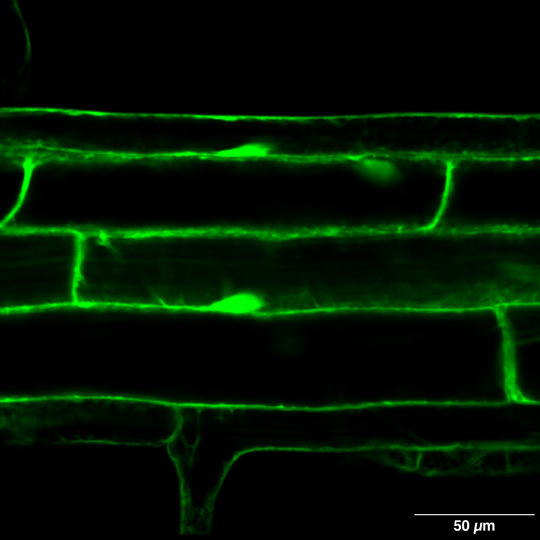
Chloroplast
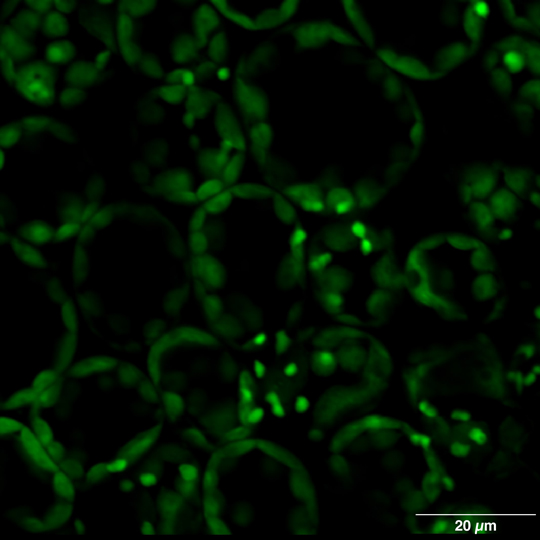
Chloroplasts are one of the plastids and are plant-specific organelles. They are present in green tissues and participate in photosynthesis. Chloroplasts are considered to be derived from the endosymbiosis of cyanobacteria millions of years ago. They have their own genome, which is distinct from the genome of the cell nucleus. This picture shows leaf cells of Arabidopsis expressing a fusion gene of GFP with a chloroplast targeting signal. The dark region in each cell is a vacuole, and chloroplasts, which are observed as green structures, are present in the periphery region between the plasma membrane and the vacuole. (Plant materials were provided by Dr. Yasuo Niwa in The University of Shizuoka)
Microfilament
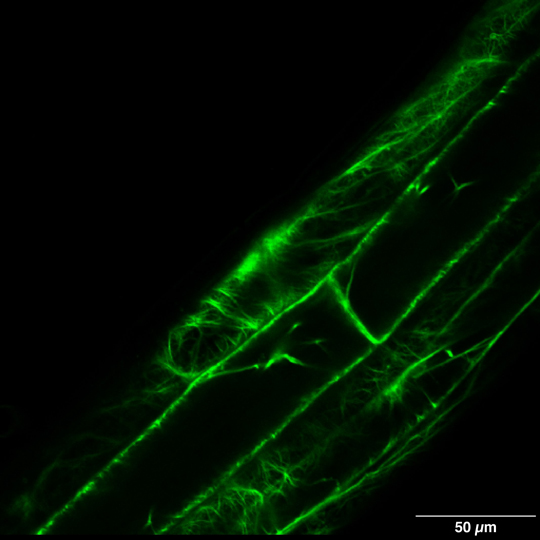
Microfilaments are fibrillar structures, which is formed from actin. In plant cells, several organelles, such as mitochondria, chloroplasts and peroxisomes, utilize microfilaments to move inside cells. This picture shows root cells of Arabidopsis expressing a fusion gene of GFP with a gene encoding an actin binding protein. (Plant materials were provided by Dr. Daigo Takemoto in Nagoya University)
Microtubule
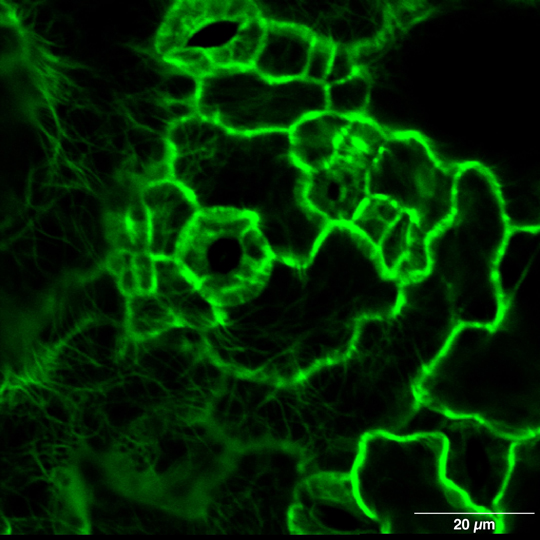
Microtubules consist of α- and β-tubulins, and are tubular with hollow structures whose diameter in about 25 nm. They have important roles in expansion and cell division. This picture shows leaf cells of Arabidopsis expressing a fusion gene of GFP with the gene encoding β-tubulin. (Plant materials were provided by Dr. Takashi Hashimoto in Nara Institute of Science and Technology)
ER

The endoplasmic reticulum (ER) is present as a network-structure inside plant cells. It has various functions such as modification and/or secretion of proteins. This picture shows cotyledonary cells of Arabidopsis expressing a fusion gene of GFP with an ER-retention signal. The rod-shaped structures are ER bodies.
Vacuole
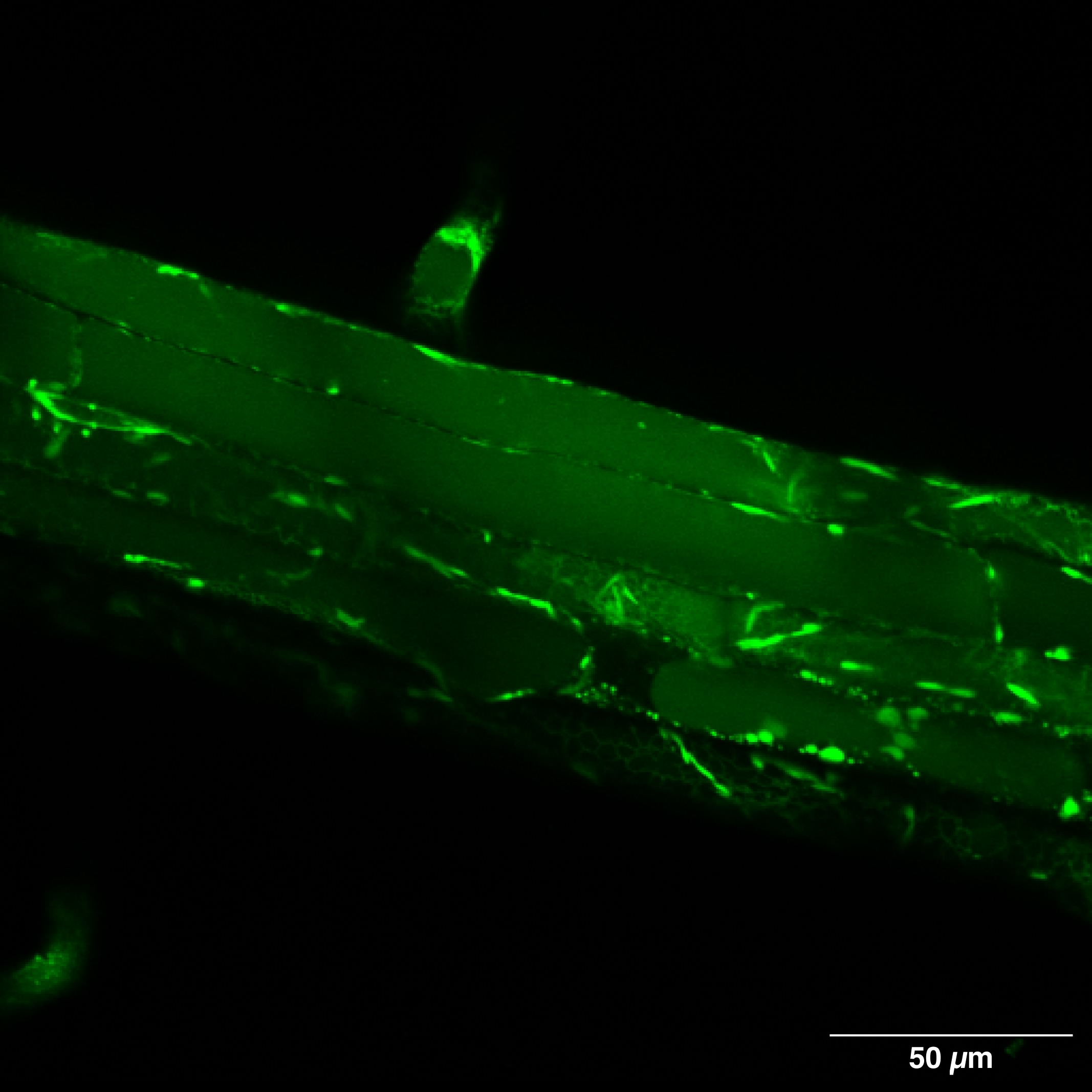
In most mature plant cells, vacuoles occupy as much as ~90 % of the volume, and have various roles such as cell expansion, cell differentiation, and degradation of unwanted substances from the cell. The inside of the vacuole is acidic, and contains proteins, dyes and inorganic substrates. This picture shows the root cells of Arabidopsis expressing vacuole-targeted GFP gene. The rod-shaped structures are ER bodies.
ゴルジ装置(Golgi apparatus)
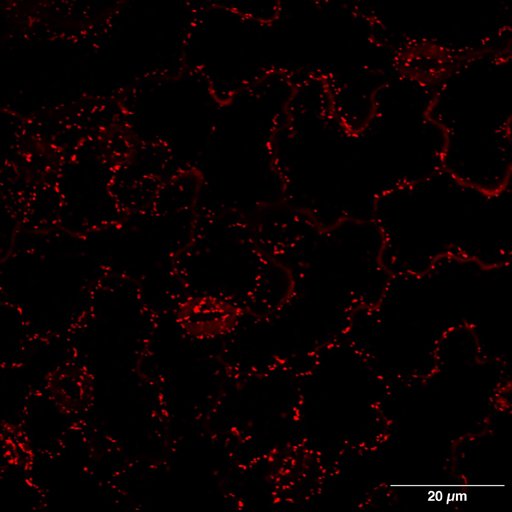
Golgi apparatuses are observed as membrane-surrounded flat structures in electron microscopy. This picture shows leaf cells of Arabidopsis expressing a fusion gene of red fluorescent protein with a gene encoding a Golgi-resided protein. In some cases as shown in this picture, the Golgi apparatuses are observed as numerous dot-shaped structures. (Plant materials were provided by Dr. Haruko Ueda in Kyoto University)
Copyright (C) . All right reserved. National Institute for Basic Biology.
Contact: podb@nibb.ac.jp